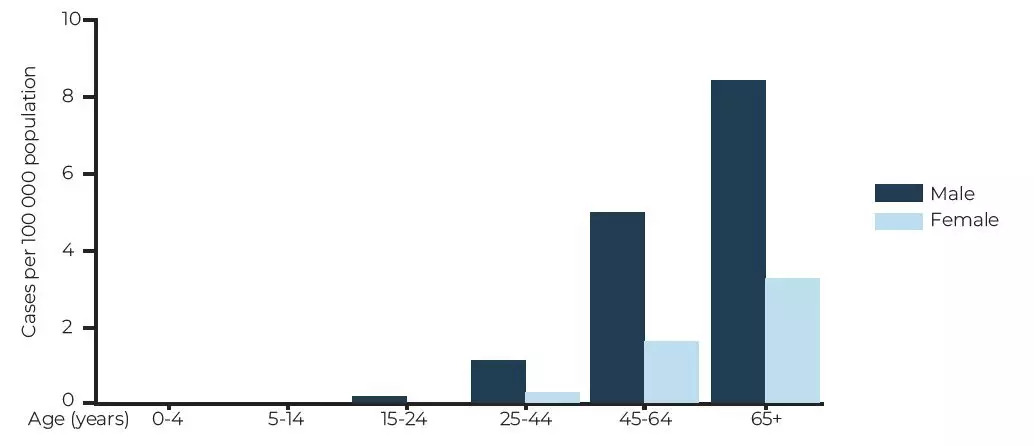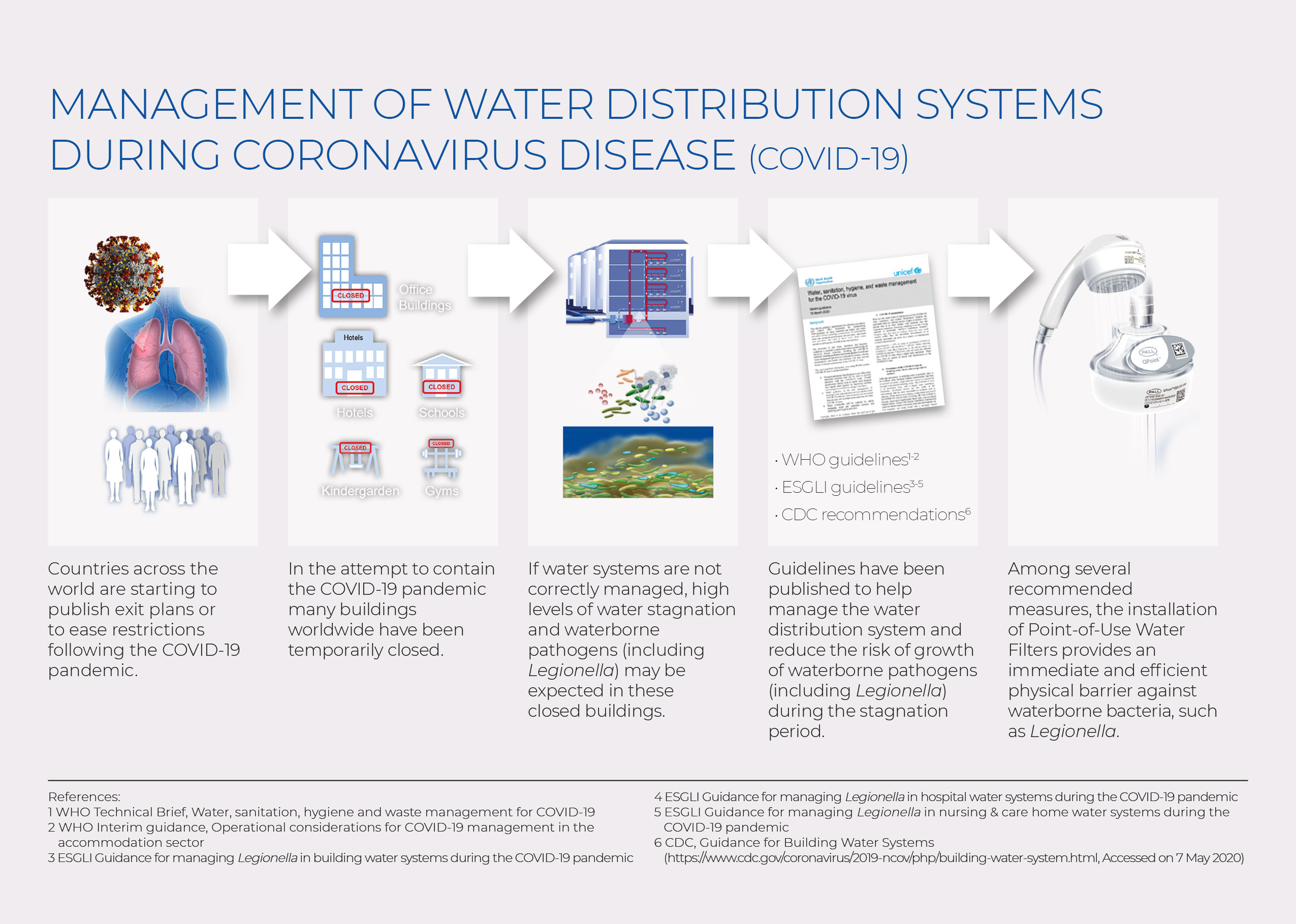What is Legionella and which diseases can it cause?
Legionella spp. are bacteria found naturally in aquatic environments such as lakes or streams. They can become a health concern when they grow and spread in in-premise water systems where the water is maintained at temperatures high enough to encourage growth (1).
Legionella pneumophila is perhaps the best known waterborne bacterium colonizing drinking water biofilms. It can also be found in central storage areas (e.g., water tanks) (2-4) including air-conditioning cooling towers, evaporative condensers as well as decorative fountains and retail store misters (5).
Legionella can cause diseases, including the most serious, Legionnaires’ disease, which is accompanied by pneumonia, and Pontiac fever, which can cause classic cold symptoms such as fever, cough or muscle aches.
Who does it affect most?
Legionnaires’ disease occurs in adults, and the incidence increases with age (≥ 50 years). Immunocompromised and elderly persons in particular, as well as smokers and people with chronic diseases, are among the risk groups in whom Legionnaires’ disease can often lead to severe to fatal progression of the disease (6).
Distribution of Legionnaires’ disease cases per 100 000 population by age and gender, EU/EEA, 2018.
Source: Legionnaires’ disease Annual Epidemiological Report for 2018
What is Legionella and Legionnaires‘ disease named after?
Legionnaires' disease first became known in 1976 at a meeting of a veterans' association in Philadelphia after several conference participants fell ill with atypical pneumonia. During and up to two weeks after the conference, 221 men fell ill and 34 of them died. As was later shown, bacteria of the species Legionella pneumophila in the air conditioning of a hotel were the cause of the disease.
Legionnaires' disease can be understood as a disease of civilization – growing urban development and more water distribution systems offer more space for biofilms and waterborne pathogens to grow and proliferate.
Water stagnation in healthcare and non-healthcare settings – an increasingly important issue during the coronavirus pandemic
In the attempt to contain the COVID-19 pandemic many buildings worldwide have been temporarily closed and a high level of water stagnation is expected. Water stagnation can be an important contributing factor to the microbial growth within water installations, increasing the risk of Legionella and other waterborne pathogen contaminations.
International, regional and local guidelines have been published to help manage the water distribution system correctly and reduce the risk of growth of waterborne pathogens including Legionella spp. during stagnation periods. Besides flushing and maintaining the required temperatures for hot and cold water, chemical continuous or shock disinfection, emptying the water installation, the short-term installation of Point-of-Use Water Filters can provide an immediate and efficient physical barrier against waterborne bacteria such as Legionella spp.
References
- Health and Safety Executive- What is Legionnaires’ diseases? https://www.hse.gov.uk/legionnaires/what-is.htm. [Accessed on 29 Jan 2021].
- Exner M, Kramer A, Lajoie L, Gebel J, Engelhart S, Hartemann P. Prevention and control of health care-associated waterborne infections in health care facilities. Am J Infect Control. 2005;33(5 Suppl 1):S26-S40. doi:10.1016/j.ajic.2005.04.002.
- Lindsay D, von Holy A. Bacterial biofilm within the clinical setting: What healthcare professionals should know. J Hosp Infect. 2006 Dec;64(4):313-25. doi:10.1016/j.jhin.2006.06.028.
- Flemming H-C, Wingender J, The biofilm matrix. Nat Rev Microbiol. 2010;8(9):623-633. doi:10.1038/nrmicro2415.
- Gerba CP. Environmentally Transmitted Pathogens. In: Environmental Microbiology (Third Edition). Academic Press; 2015, 509-550.
- Buchholz U, Stӧcker P, Brodhun B. Legionnaires disease--reordered. Infect Control Hosp. 2010;31(1):104-105. doi:10.1086/648664.
Author bio
Darina Schmidt, Global Demand Generation Manager Medical – Water

Darina is part of the Cytiva Marketing Team covering the medical water portfolio. She has knowledge in Marketing Communications and brings insightful current industry trends.

